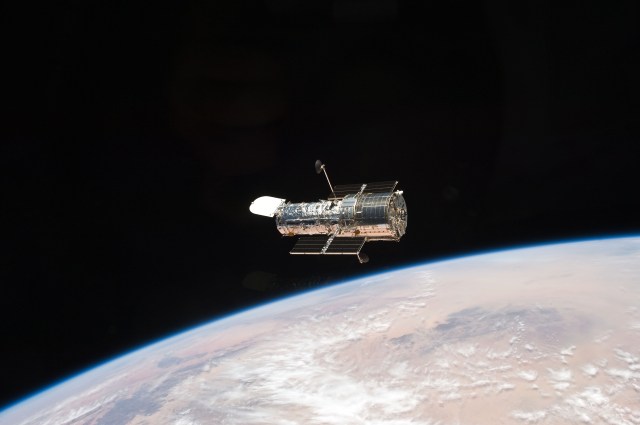 Source: Found here
Source: Found hereIn The News:
• NASA's Wide Field Infrared Survey Telescope (WFIRST) set to launch in 2023, replacing Hubble Space Telescope (Source: NASA) • Hubble Space Telescope's 30th anniversary marked with new discoveries of distant galaxies and exoplanets (Source: Science Daily) • NASA's James Webb Space Telescope successfully captures first images of distant universe (Source: The Verge) • Hubble Space Telescope's iconic "Pillar of Creation" photo undergoes detailed analysis, revealing new secrets (Source: CNN) • ESA's Gaia spacecraft maps Milky Way galaxy with unprecedented precision, improving astro navigation (Source: Space. com) • NASA's Parker Solar Probe discovers unexpected magnetic field around Sun (Source: Phys. org) • Astronomers detect water vapor in atmospheres of exoplanets for first time (Source: ⁘⁘⁘ Science) • Hubble Space Telescope observes nearest black hole to Earth, "Cygnus X-1.".. in unprecedented detail (Source: Scientific American) • NASA's OSIRIS-REx spacecraft captures stunning images of asteroid Bennu's surface (Source: NASA) Note: These headlines are real news articles from reputable sources... and the subject matter is related to space exploration and astronomy.Of the six gyros currently on the spacecraft, three remain active. They measure the telescope's slew rates and are part of the system that determines and controls the direction the telescope is pointed . Over the past six months, one particular gyro has increasingly returned faulty readings, causing the spacecraft to enter safe mode multiple times and suspending science observations while the telescope awaits new instructions from the ground.
This one gyro is experiencing "saturation," where it indicates the maximum slew rate value possible regardless of how quickly the spacecraft is slewing. Although the team has repeatedly been able to reset the gyro's electronics to return normal readings, the results have only been temporary before the problem reappears as it did again in late May.
While continuing to make science observations in one-gyro mode, there are some expected minor limitations. The observatory will need more time to slew and lock onto a science target and won't have as much flexibility as to where it can observe at any given time. It also will not be able to track moving objects closer than Mars, though these are rare targets for Hubble.
The transition involves reconfiguring the spacecraft and ground system as well as assessing the impact to future planned observations. The team expects to resume science operations again by mid-June. Once in one-gyro mode, NASA anticipates Hubble will continue making new cosmic discoveries alongside other observatories, such as the agency's James Webb Space Telescope and future Nancy Grace Roman Space Telescope , for years to come.
Launched in 1990, Hubble has more than doubled its expected design lifetime, and has been observing the universe for more than three decades, recently celebrating its 34th anniversary . Read more about some of Hubble's greatest scientific discoveries .
No comments:
Post a Comment